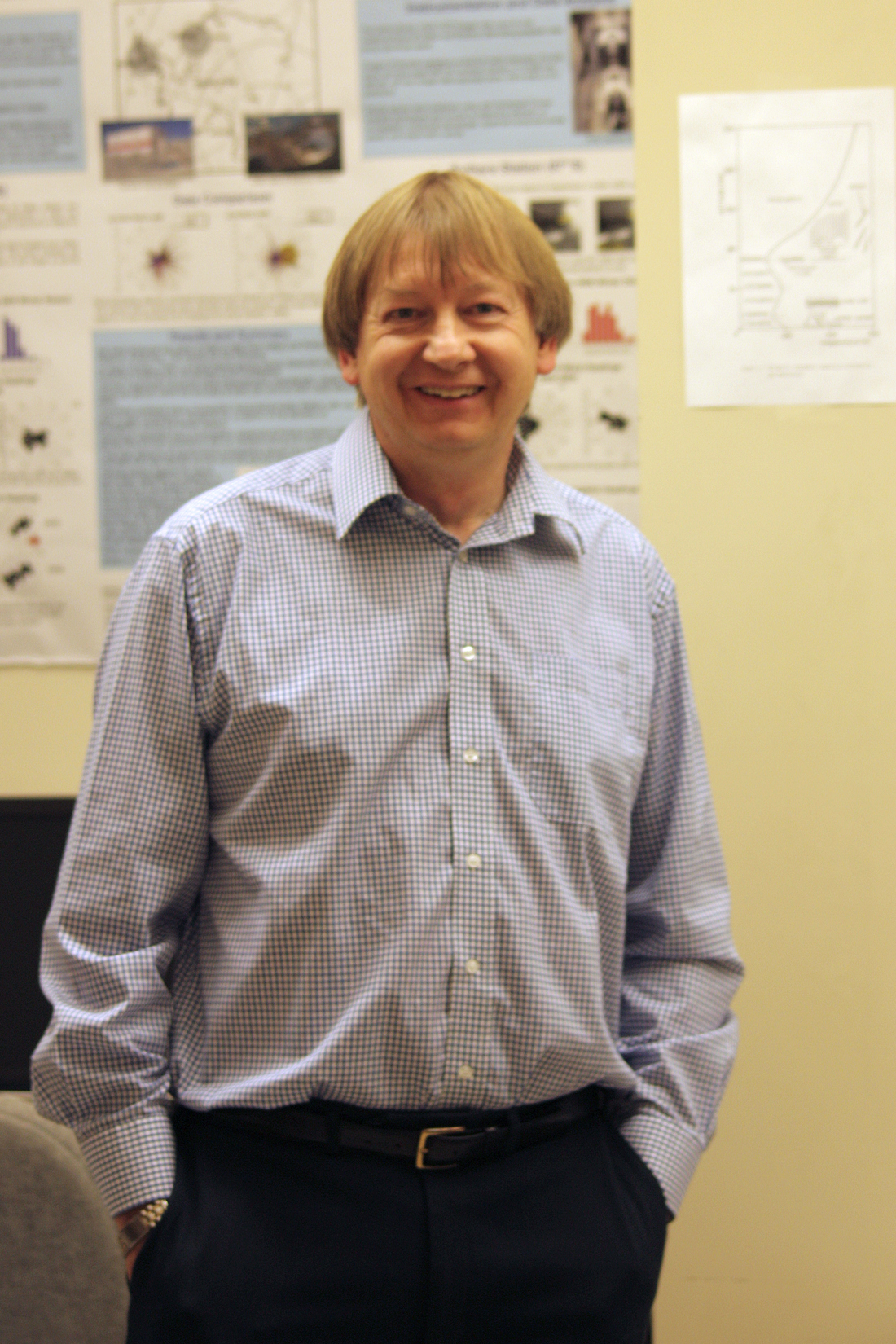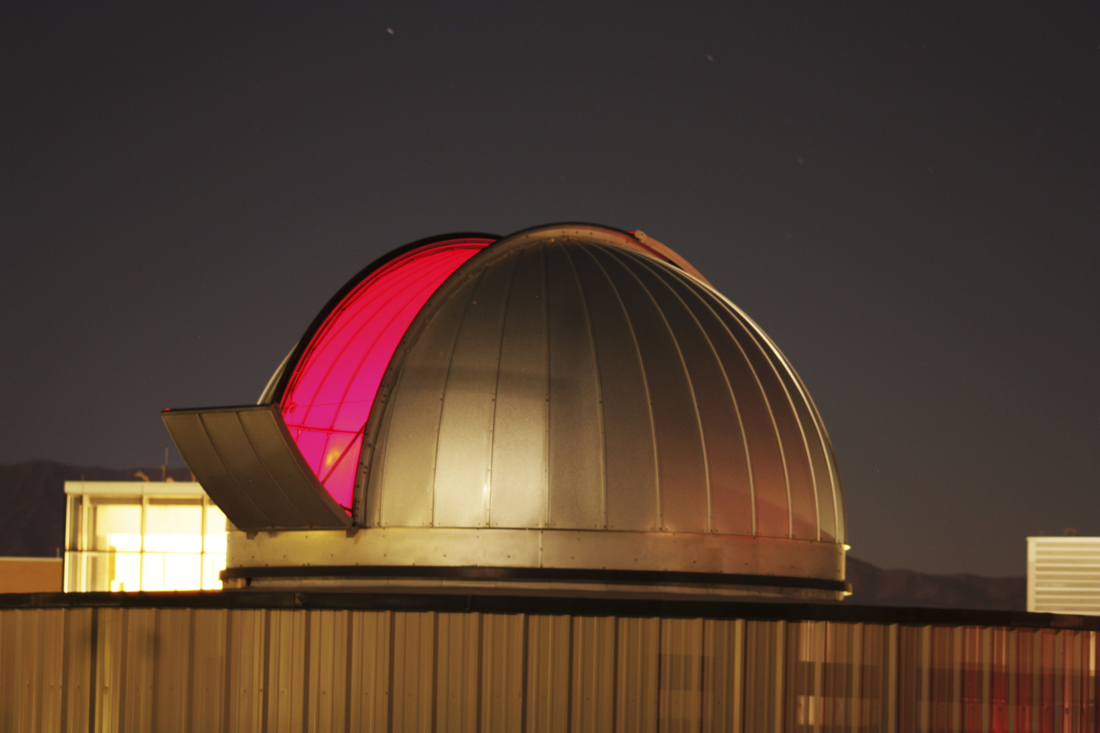Center is internationally known for atmospheric research
The Center for Atmospheric and Space Science (CASS) at Utah State University may be hidden from the average student’s eye, but it is nationally and internationally renowned for the work that is done on the earth’s atmosphere as well as in space.
CASS scientists work on a variety of projects and experiments with various organizations that they receive funding from, such as the National Science Foundation, NASA, and the U.S. Air Force. Those who work in CASS, physics professor Michael Taylor said, are as varied as the applications and experiments that can be done.
“CASS is a center for research, and has made it possible for people with different areas of expertise to get together and apply for grants and perform their research,” he said.
Taylor said he came to work with CASS 10 years ago, as a researcher, using cameras to look at the night sky and see light that was emitted. But the center 20 years ago looked very different from how it looks today.
Other scientists are bringing in their own types of research, Taylor said. Professor and Director of CASS Robert Schunk is working on modeling work with the ionosphere of upper atmosphere, Professor Vincent B. Wickwar is working with LIDAR, or light detection and ranging – the green beam that can be seen some nights, shooting into the sky from the SER building.
“It’s a concentrated beam of light, very powerful,” Taylor said. “If you point it up at the sky, you can imagine as the light comes out, some of the light will hit an air molecule and be scattered back. Because it always travels at the speed of light, 300,000 km a second, (aprox. 984,300,000 miles/sec) we can do laser ranging, we can measure scattered light from different levels of the atmosphere.”
To expand on the work is a new system from the University of Colorado, which was won by Utah State in a bidding war through the National Science Foundation, Taylor said. The beam doesn’t get scattered by air molecules in the lower atmosphere. Instead, it hits ions deposited by meteors that come through the atmosphere that have formed a layer around the earth. The laser beam is tuned to get a signal back from the molecules higher up, and receive information from it.
Taylor said these two systems work well together, and help to increase the amount of information CASS scientists can receive from the atmosphere using equipment on the ground level.
All of these sensing instruments give scientists answers about what’s happening in the atmosphere. In the stratosphere, scientists can receive that data from balloons, and higher even with rockets. But those are very expensive, Taylor said, and the rockets are sent up and come down within the space of minutes, giving scientist less data-a-taste.
“CASS is about what’s happening through the whole atmosphere,” Taylor said. “The lasers give the ability to get information long term. The lasers can measure the temperature, winds, and variability of the upper atmosphere.”
CASS doesn’t only work with light and laser beams, though. Michael Olson is a graduate student working with Professor Bela Fejer, and studies ionospheric plasma drifts.
“Up in the atmosphere you have all sorts of charged particles that affect radio transmission, for example,” Olson said. “You’ve probably heard the daytime versus nighttime difference in AM radio. That is because the ionosphere changes between day and night. What I am doing is looking at changes in the upper atmosphere during certain middle atmosphere weather events.”
To do this, Olson and Fejer use models and specialized equipment. These weather events are basically global storms in the upper atmosphere, he said, and can affect day to day life for everyday people.
“What we’re trying to do is understand how the stratosphere is affected,” Olson said. “A common example is airplanes. They’re starting to fly at higher and higher altitudes, because it is easier and cheaper. If the ionosphere is affected, it could change the balance and affect passengers on these airlines. It’s a safety thing.”
Larry Gardner, researcher in CASS, also said a lot of what is being learned and studied at CASS will impact the general population now, and in the future.
“One of the big things to people around here is GPS,” he said. “You have your little handheld, and you’re going on a treasure hunt. Well, in the future and to some extent now, they can actually correct that signal using some of the models we have. You can find your treasure within 20 feet instead of 100 feet.”
Gardner said he has been working with CASS for a few years now, and said the best thing about the center is that he likes to come to work everyday.
“You get to work with such brilliant people. It’s just fascinating to be able to work with people whose brains work at that level. But they’re very down to earth, and can still deal with everyday people,” Gardner said.
Not everything that is done at CASS is strictly for the center or atmospheric and space science, Gardner said.
“Every single project we work on has some specific application, or, it’s just a project that is going to look at solving a general science question, something that needs to be solved for other people in other fields, or people in our same field,” he said.
CASS is a small center compared to various departments and areas on campus, but is doing important work that affects people in different careers and the general public. Olson said while it may not be well known, it has major impacts in space.
“CASS may be unknown around campus, but it’s important to notice many of our professors are known not only nationally, but worldwide. We have excellent professionals in this field. It is one of the more esteemed colleges as far as space weather goes,” Olson said.
– april.ashland@aggiemail.usu.edu

Physics professor Michael Taylor said CASS is geared towards what is happening throughout the entire atmosphere. CASS is nationally and internationally renowned for the work that is done on the earth’s atmosphere. Armen Hovsepyam photo

